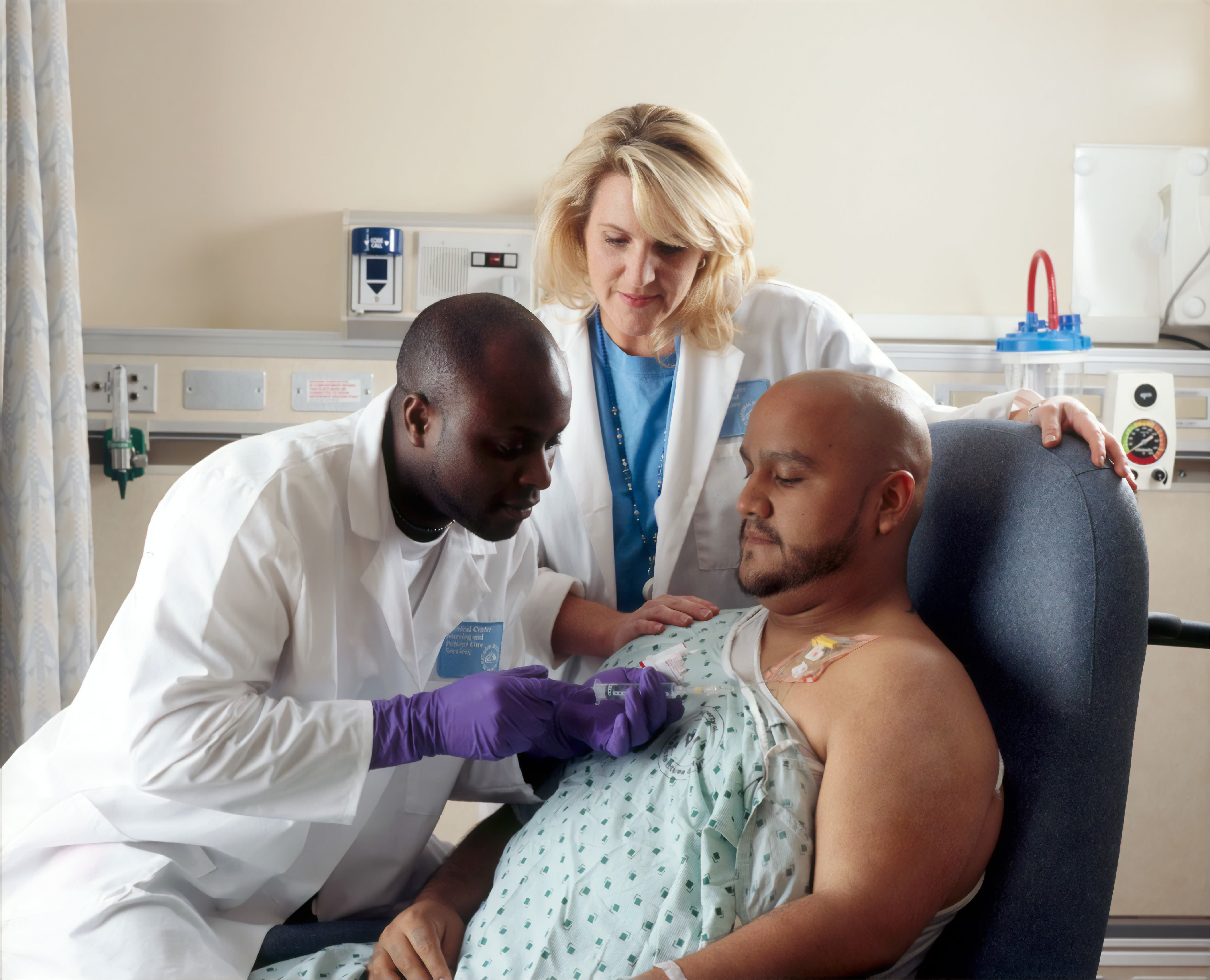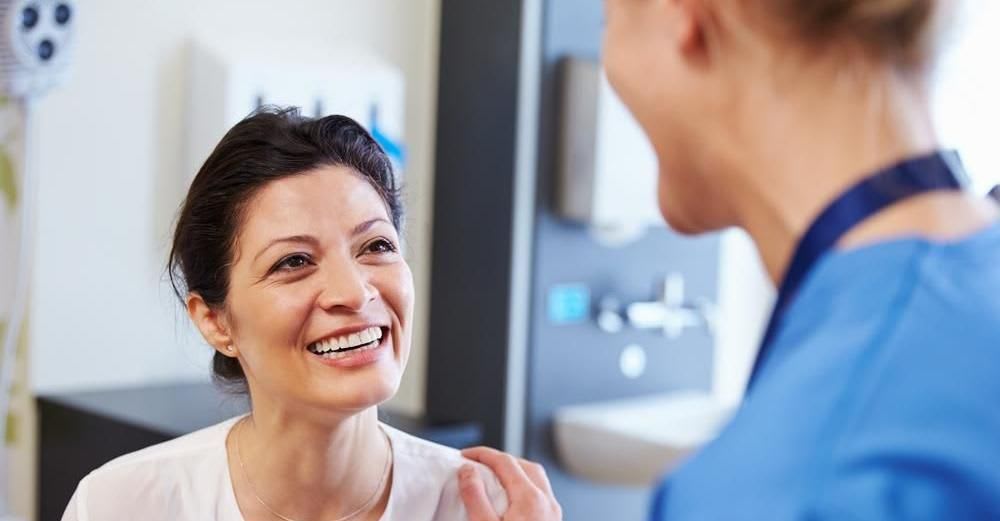7 Fields of Study to Fight Cancer
The global cancer burden is profound: more than 9.6 million cancer deaths and 18.1 million new cancer cases were reported in 2018 (pdf), according to data shared by the International Agency for Research on Cancer. This number is only expected to climb. In fact, by the year 2040, experts predict that there will be 27.5 million new cases of cancer worldwide every year. The takeaway couldn’t be more clear: cancer research is imperative. The good news is brilliant minds across the planet are currently working hard to move us closer to better cancer prevention, treatment, and management -- not to mention a cure. Want to join them? There are many ways to do so. Read on for a roundup of seven scientific fields positioning students to make a difference in the fight against cancer.
- Education

1 Chemistry and biochemistry
When we think of cancer, we often think of doctors, who are on the frontlines of cancer treatment. Behind the scenes, however, countless researchers are hard at work trying to understand cancer toward better treatments and a cure. Many of them are chemists and biochemists. The former deal with chemical reactions which occur in the physical world, while the latter deal with the study of chemical reactions inside living organisms.
Chemical & Engineering News says of the link between chemistry, biochemistry and cancer, “Chemistry plays the central role in the etiology and prevention of the most prevalent types of human cancer. The chemical agents responsible for the initiation of cancer are the estrogens. They become carcinogenic when their unbalanced metabolism in our bodies generates excessive amounts of estrogen-3,4-quinones. When that happens, the estrogen-3,4-quinones react with DNA, forming depurinating estrogen-DNA adducts that generate the mutations leading to the initiation of cancer.”
It follows that just as chemical changes can lead to cancer, so can new discoveries in chemistry and biochemistry lead to the improvement of cancer prevention and treatment.
2. Molecular biology
Molecular biology addresses biology at the molecular level; it intersects with other areas of biology and chemistry, including genetics and biochemistry. ScienceDaily explains, “Molecular biology chiefly concerns itself with understanding the interactions between the various systems of a cell, including the interrelationship of DNA, RNA and protein synthesis and learning how these interactions are regulated. [...] Researchers in molecular biology use specific techniques native to molecular biology, but increasingly combine these with techniques and ideas from genetics and biochemistry.”
Molecular defects are responsible for the development of many cancers. Therefore, advances in the molecular biology of cancer can contribute to major advancements in dealing with the disease. One example pertains to how genetically engineered CAR-T cells impact the body: while they have been proven to be successful in treating some leukemias and lymphomas, they can also trigger life-threatening immune reactions. Molecular biology is being used to help understand this immune overreaction in order to prevent it.
3. Physiology
Physiology is the branch of biology which deals with the functions of living organisms and their parts. It covers a range of topics, including organs, anatomy, cells, biological compounds and how they interact to support life. As cancer is the uncontrolled growth of cells, physiology also plays a role in understanding why this occurs and how to prevent it.
One example of physiologists at work to help with cancer and its effects is a partnership between Cotton O'Neil Cancer Center nd Kansas State University's Clinical Integrated Physiology Lab aimed at studying the link between chemotherapy and heart disease in childhood cancer survivors.
4. Medical physics
This branch of applied physics uses physics principles, methods, and techniques toward the prevention, diagnosis, and treatment of human diseases The International Atomic Energy Agency (IAEA) says, “These health professionals calculate exact radiation doses and devise, with doctors, treatment plans to use these doses to target cancer cells with minimal damage to healthy tissue.”
A team of physicists at McMaster University, for example, are designing red blood cells with the ability to target specific instructions and catastrophic diseases, including cancer. McMaster Professor and senior study advisor Maikel Rheinstädter says, “We call these super-human red blood cells. We think they could work as the perfect stealth drug carriers which can outsmart our immune system.”
5. Biomedical engineering
Biomedical engineering, or bioengineering, applies engineering principles to biology and healthcare fields. Biomedical engineers work with doctors, researchers and therapies to design systems, equipment, and devices with the potential to address clinical problems.
Biomedical engineering relates to many fields of medicine, including in oncology. For example, the Akay Lab biomedical research team at the University of Houston, Texas, has developed a microfluidic brain cancer chip which delivers a precise combination of cancer drugs in record time, while a research team from Harvard has developed an injectable vaccine for treating acute myeloid leukemia (AML).
6. Epidemiology
The study of how diseases occur in different groups of people and why, epidemiology has several applications in cancer treatment. Indeed, everything from what we eat to where we live can influence cancer development.
Specifically, according to MJH Life Sciences, “Three types of epidemiologic research apply to the field of cancer. Descriptive epidemiology focuses on the trends and frequency of disease in a given population. Analytic epidemiology deals with identifying causes and the predisposing risk associated with the development of disease. Clinical epidemiology outlines screening programs and evaluates the impact of prevention strategies on overall outcome.”
7. Research study design
“Doctors and scientists conduct research studies to find better ways to prevent and treat cancer. Depending on the questions they want to answer, researchers can design these studies in different ways. No study design is perfect. Each has strengths and drawbacks,” says Cancer.Net.
This is where research study design comes in. Cancer research study design coursework focuses on the design and analysis of clinical trials as they pertain to strategies for the prevention and treatment of cancer.
While each of these fields has the potential to contribute to the fight against cancer, efforts are most powerful when collaborative across the scientific spectrum. Neil Savage writes for Nature, “Cancer research has become highly multidisciplinary. The field now includes not just clinicians and molecular biologists, but also computational biologists, statisticians, nanotechnology experts and chemical engineers.”
Nancy Frunic, who heads up Novartis Pharmaceuticals’ Future Precision Medicine Diagnostics group, concludes, “No one person or department, or one lab, is going to have all the tools they need to tackle the problem. You absolutely need diverse backgrounds and subject-matter expertise.”
And there's some great news! Because a team of scientists from the University of Cardiff, in the UK, recently discovered a part of our immune system which could be used to treat all cancers! The findings, published in Nature Immunology, have not been tested but the researchers state they have "enormous potential". Daniel Davis, professor of immunology at the University of Manchester, says, "There is no question that it's a very exciting discovery, both for advancing our basic knowledge about the immune system and for the possibility of future new medicines."
If you want to be on the frontlines battling cancer and helping people the world over, consider studying one of these vital, fascinating fields.
Find your perfect program
Use our search to find and compare programs from universities all over the world!
M.D.
Joanna Hughes
Author
Joanna worked in higher education administration for many years at a leading research institution before becoming a full-time freelance writer. She lives in the beautiful White Mountains region of New Hampshire with her family.
Find a program in these categories
Read related articles

What You Should Know If You Want To Practice Medicine Abroad

Five Countries to Choose for Nursing Degrees
